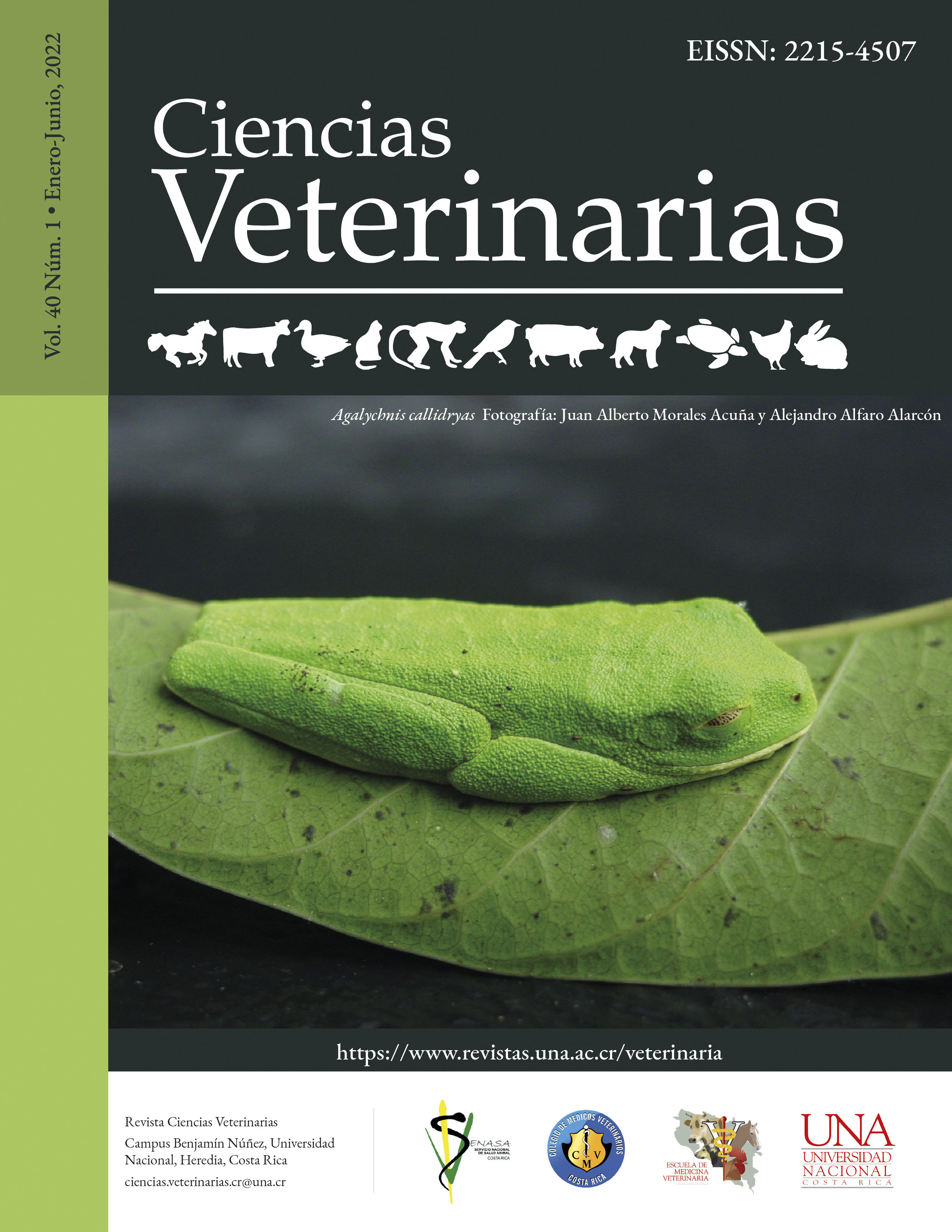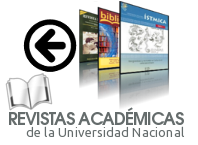Conservative Management of Equine Paraphimosis: Review and Clinical Case Report
DOI:
https://doi.org/10.15359/rcv.40-1.3Keywords:
equine penis, paraphimosis, genital suspender (jockstrap), Costa RicaAbstract
A 5-year-old Costa Rican Paso stallion had a penis trauma during coitus and developed paraphimosis complicated with edema, hematoma, local infection, and cutaneous ulcerations. A literature review about relevant aspects of this topic is performed, including animal welfare in horse breeding. Considering that penis trauma is a relatively frequent problem in equines, it is important to publish this information to benefit the general veterinary practitioner working under field conditions without suitable equine hospital support, as it happens in some countries. This paper describes how to manufacture and use a homemade genital suspender (jockstrap) properly for the successful conservative management of the problem. General instructions to prevent accidents related to the equine coitus are mentioned; this is also an important topic to avoid animal abuse.
References
Beckett, S.D., Hudson, R.S., Walker D.F., Reynolds, T.M. y Vachon, R.I. (1973). Blood pressures and penile muscle activity in the stallion during coitus. American Journal of Physiology, 225(5), 1072-1075. https://doi.org/10.1152/ajplegacy.1973.225.5.1072
Beckett, S.D., Walker D.F., Hudson, R.S., Reynolds, T.M. y Purohit, R.C. (1975). Corpus spongiosum, penis pressure and penile muscle activity in the stallion during coitus. American Journal of Veterinary Research, 36(4 Pt.1), 431-433.
Boller, M., Fürst, A., Ringer, S., Dubs, M. y Bettschart-Wolfensberger, R. (2005). Complete recovery from long-standing priapism in a stallion after propionylpromazine/xylazine sedation. Equine Veterinary Education, 17(6), 305-309. https://doi.org/10.1111/j.2042-3292.2005.tb00397.x
Breazile, J.E. (1971). The male reproductive system. En J.E. Brazile (Ed.), Textbook of Veterinary Physiology. Lea & Febiger.
Campbell, M.L.H. y Sandoe P. (2015). Welfare in horse breeding. Veterinary Record, 176(17), 436-440. https://doi.org/10.1136/vr.102814
Canisso, I.F., Ellerbrock, R.E. y Wilkins, P.A. (2020). Congenital phimosis causing preputial swelling in a newborn foal. The Canadian Veterinary Journal, 61(3), 247-250.
Consumer Product Safety Commission. (30 de noviembre de 2021). National Electronic Injury Surveillance System (NEISS). https://www.cpsc.gov/Research--Statistics/NEISS-Injury-Data
Davies, M.C.G. (2015). Equine reproductive physiology, breeding and stud management. CABI.
De Brouwer, E., Ribera, T., Climent, F. y Prades, M. (2017). Alternative method to facilitate resolution of paraphimosis after penile trauma in the horse. Equine Veterinary Education, 29(12), 655-658. https://doi.org/10.1111/eve.12556
Dougall, N. (1976). Stallions: their management and handling. J.A. Allen.
Estrada-McDermott, J.M. (2017). Veinte recomendaciones prácticas para el manejo de garañones. Revista UTN Informa, 79, 82-86.
Feary, D.J., Moffett, P.D., Bruemmer, J.E., Southwood, L., McCue, P., Niswender, K.D., Dickinson, C. y Traub‐Dargatz, J. (2005). Chemical ejaculation and cryopreservation of semen from a breeding stallion with paraphimosis secondary to priapism and haemorrhagic colitis. Equine Veterinary Education, 17(6), 299-304. https://doi.org/10.1111/j.2042-3292.2005.tb00396.x
Getty, R. (1982). Sisson & Grossman Anatomía de los animales domésticos. Masson.
Held, J.P., Lofstedt, R., Munroe, G. y Watson, E. (19 de noviembre de 2020). Penis: paraphimosis. https://www.vetstream.com/treat/equis/diseases/penis-paraphimosis
Hendrickson, D.A. y Baird, A.N. (1989). Turner & McIlwraith Techniques in Large Animal Surgery. Lippincott Williams & Wilkins.
Jubb, K.V.F., Kennedy, P.C. y Palmer, N. (2016). Pathology of Domestic Animals: Male genital system. Elsevier.
Kersjes, A.W., Németh, F., Rutgers, J.E. y Blok, F.A. (1985). A colour atlas of large animal surgery. Mosby International.
Koch, C., O’Brien, T. y Livesey, M.A. (2009). How to construct and apply a penile repulsion device (probang) to manage paraphimosis. Recuperado el 18 de noviembre del 2020 de: https://aaep.org/sites/default/files/issues/proceedings-09proceedings-z9100109000338.pdf
Konig, H.E. y Liebich, H.G. (2014). Veterinary anatomy of domestic mammals. Schattauer.
Little, T.V. y Holyoak, G.R. (1992). Reproductive anatomy and physiology of the stallion. Veterinary Clinics of North America: Equine Practice, 8(1), 1-29. https://doi.org/10.1016/S0749-0739(17)30464-9
McCall, J.P. (2001). The stallion: a breeding guide for owners and handlers. Jimani Pubns.
McDonnell, S.M. (1999). Stallion sexual behavior. En J. Samper (Ed.). Equine breeding management and artificial insemination (pp. 53-66). Saunders.
McDonnell, SM. (2001). Oral imipramine and intravenous xylazine for pharmacologically induced ex copula ejaculation in stallions. Animal Reproduction Science, 68(3-4), 153-159. https://doi.org/10.1016/S0378-4320(01)00152-X
McDonnell, S.M. (2010). Managing the paralysed penis, priapism or paraphimosis in the horse. Equine Veterinary Education, 17(6), 310-311. https://doi.org/10.1111/j.2042-3292.2005.tb00398.x
McDonnell, S.M., Turner R. M., Love C.C. y LeBlanc, M.M. (2003). How to manage the stallion with a paralyzed penis for return to natural service or artificial insemination. Proceedings 49th Annual Convention of Equine Practitioners, New Orleans, Louisiana.
Memon, M.A., Usenik, E.A., Varner D.D. y Meyers, P.J. (1988). Penile paralysis and paraphimosis associated with reserpine administration in a stallion. Theriogenology, 30(2), 411-419. https://doi.org/10.1016/0093-691X(88)90189-6
Miller, R. (1981). Equine learning behaviors. Behavioral Processes, 76(1), 1-13.
Miller, R. (1981). Male aggression, dominance and breeding behavior in red desert feral horses. Ethology, 57(3-4), 340-351. https://doi.org/10.1111/j.1439-0310.1981.tb01930.x
Nie, G.J. y Pope, K.C. (1997). Persistent penile prolapse associated with acute blood loss and acepromazine maleate administration in a horse. Journal of the American Veterinary Medical Association, 211(5), 587-589.
Orsini, J.A. y Divers, T.J. (2000). Manual de urgencias en la clínica equina. Harcourt.
Pauwels, F., Schumacher, J. y Varner, D. (2005). Priapism in horses. Compendium on Continuing Education for the Practicing Veterinarian, 27, 311-315.
Perkins, N.R. y Frazer, G.S. (1994). Reproductive emergencies in the stallion. Veterinary Clinics of North America: Equine Practice, 10(3), 671-683. https://doi.org/10.1016/S0749-0739(17)30353-X
Pycock J. (1997). Equine reproduction and stud medicine: self-assessment colour review. Manson Publishing.
Reece, W.O., Erickson, H., Goff, J.P. y Uemura, E.E. (2015). Duke´s Physiology of Domestic Animals. Wiley-Blackwell.
Rossdale, P.D y Ricketts, S.W. (1974). The practice of equine stud medicine. Bailliere Tindall.
Scheneider, S. y Birk, S. (2013). Stallions care and management: A complete guide to safer management. Cadmos Verlag GmbH.
Schumacher, J. (2019). Penis and prepuce. En J.A. Auer y J.A. Stick. Equine Surgery (5 ed., p. 1034-1046). Elsevier.
Schumacher, J. y Vaughan, J.T. (1988). Surgery of the penis and prepuce. Veterinary Clinics of North America: Equine Practice, 4(3), 473-491. https://doi.org/10.1016/S0749-0739(17)30624-7
Silva, L.A.F.D., Rabelo, R.E., Godoy, R.F.D., Silva, O.C.D., Franco, L.G., Coelho, C.M.M. y Cardoso, L.L. (2010). Estudo retrospectivo de fimose traumática em equinos e tratamento utilizando a técnica de circuncisão com encurtamento de pênis (1982-2007). Ciência Rural, 40(1), 123-129. https://doi.org/10.1590/S0103-84782009005000231
Singh, B. (2018). Dyce, Sack and Wensing´s Textbook of Veterinary Anatomy. Elsevier.
Strickland, C. (2000). Equine-Related Human Injuries. Recuperado el 20 de noviembre del 2020 de: https://thehorse.com/14010/equine-related-human-injuries/
Van den Top, J.G.B., Ensink, J.M., Barneveld, A. y van Weeren, P.R. (2011). Penile and preputial squamous cell carcinoma in the horse and proposal of a classification system. Equine Veterinary Education, 23(12), 636-648. https://doi.org/10.1111/j.2042-3292.2010.00216.x
Walker, D.F y Vaughan, J.T. (1980). The equine male. En J.T Vaughan y D.F. Walker (Eds.). Bovine and Equine Urogenital Surgery (p. 105-182.). Lea & Febiger.
Wheat, J.D. (1966). Penile paralysis in stallions given propiopromazine. Journal of the American Veterinary Medical Association, 148(4), 405-406.
Wilson, D.A., Kramer J., Constantinescu, G.M. y Branson, K.R. (2006). Manual of Equine Field Surgery. Saunders Elsevier.
Wilson, D.V., Nickels, F.A. y Williams, M.A. (1991). Pharmacological treatment of priapism in horses. Journal of the American Veterinary Medical Association, 199(9), 1183-1184.
Published
How to Cite
Issue
Section
License
Licensing of articles
All articles will be published under a license:

Licencia Creative Commons Atribución-NoComercial-SinDerivadas 3.0 Costa Rica.
Access to this journal is free of charge, only the article and the journal must be cited in full.
Intellectual property rights belong to the author. Once the article has been accepted for publication, the author assigns the reproduction rights to the Journal.
Ciencias Veterinarias Journal authorizes the printing of articles and photocopies for personal use. Also, the use for educational purposes is encouraged. Especially: institutions may create links to specific articles found in the journal's server in order to make up course packages, seminars or as instructional material.
The author may place a copy of the final version on his or her server, although it is recommended that a link be maintained to the journal's server where the original article is located.
Intellectual property violations are the responsibility of the author. The company or institution that provides access to the contents, either because it acts only as a transmitter of information (for example, Internet access providers) or because it offers public server services, is not responsible.







